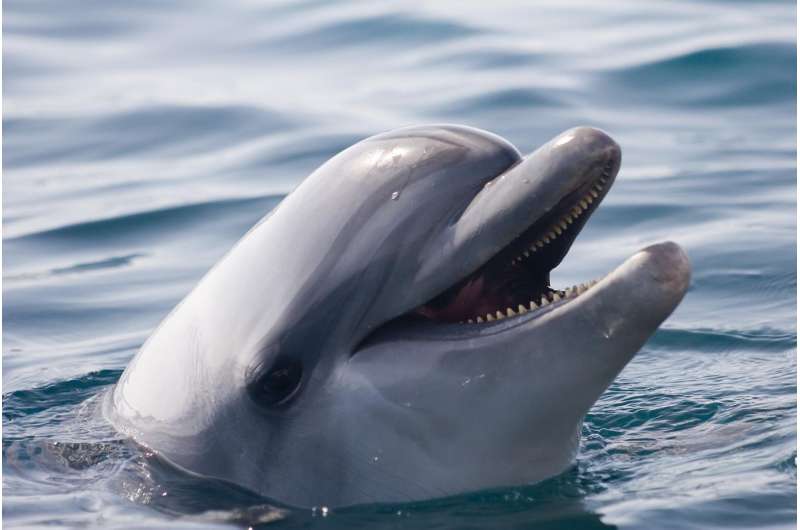January 6, 2010 report
Scientists say dolphins should be treated as non-human persons

(PhysOrg.com)—Scientists studying dolphin behavior have suggested they could be the most intelligent creatures on Earth after humans, saying the size of their brains in relation to body size is larger than that of our closest relatives, the chimpanzees, and their behaviors suggest complex intelligence. One scientist said they should therefore be treated as "non-human persons" and granted rights as individuals.
The behavioral studies showed dolphins (especially the bottlenose) have distinct personalities and self-awareness, and they can think about the future. The research also confirmed dolphins have complex social structures, with individuals co-operating to solve difficult problems or to round up shoals of fish to eat, and with new behaviors being passed from one dolphin to another.
Several examples of learning being passed on to other individuals have been observed. In one case a rescued dolphin in South Australia, taught to tail-walk during recuperation, in turn taught the trick to other wild dolphins in the Port Adelaide river estuary when she was released. According to marine biologist Mike Bossley it was "like watching a dance craze take off", with the dolphins apparently learning the trick just for fun, since tail-walking has no natural function.
Work carried out by professor of psychology at the City University of New York, Diana Reiss, showed dolphins could recognize themselves in a mirror, and could use it to inspect other parts of their bodies, an ability previously only demonstrated in humans and a few animals such as apes, elephants and pigs. In another study Reiss was able to teach captive dolphins a rudimentary language based on symbols.
In anatomical studies of the dolphin, zoologist Lori Marino and colleagues from Emory University, Atlanta, Georgia in the US, used MRI (magnetic resonance imaging) scans to map the brains of dolphins and compare them with the brains of primates. She found the ratio of dolphin brain mass to body size to be second only to the human brain, which means dolphin brains are relatively larger than those of chimpanzees.
The neocortex and cerebral cortex of the bottlenose dolphins were particularly large and the cortex had similar convoluted folds to those found in human brains and strongly associated with intelligence. Cortical folds increase the volume of the cortex and its capacity for interconnections to form. Marino said the findings on brain anatomy and intelligence of dolphins mean we should re-examine the treatment of dolphins, especially when their treatment results in suffering.
Reiss and Marino say their behavioral and anatomical findings and our new understanding of dolphin intelligence mean it may not be ethical to keep dolphins in aquatic amusement parks for our entertainment, or to kill them for food. Around 300,000 whales, dolphins, and porpoises die each year, with some being killed for food, such as the annual killing of thousands of dolphins and small whales in Taijii, Japan, or even to prove the manhood of those killing them, such as the slaughter of Calderon dolphins at Faroe Island, in Denmark.
Reiss and Marino will present their findings at a conference in San Diego, California next month. Also speaking at the conference will be professor of ethics and business at Loyola Marymount University in Los Angeles, Thomas White, who said the new research adds weight to his ideas that dolphins should be regarded as "non-human persons" with the right to be treated as individuals. White is the author of the book "In Defense of Dolphins".
© 2009 PhysOrg.com















